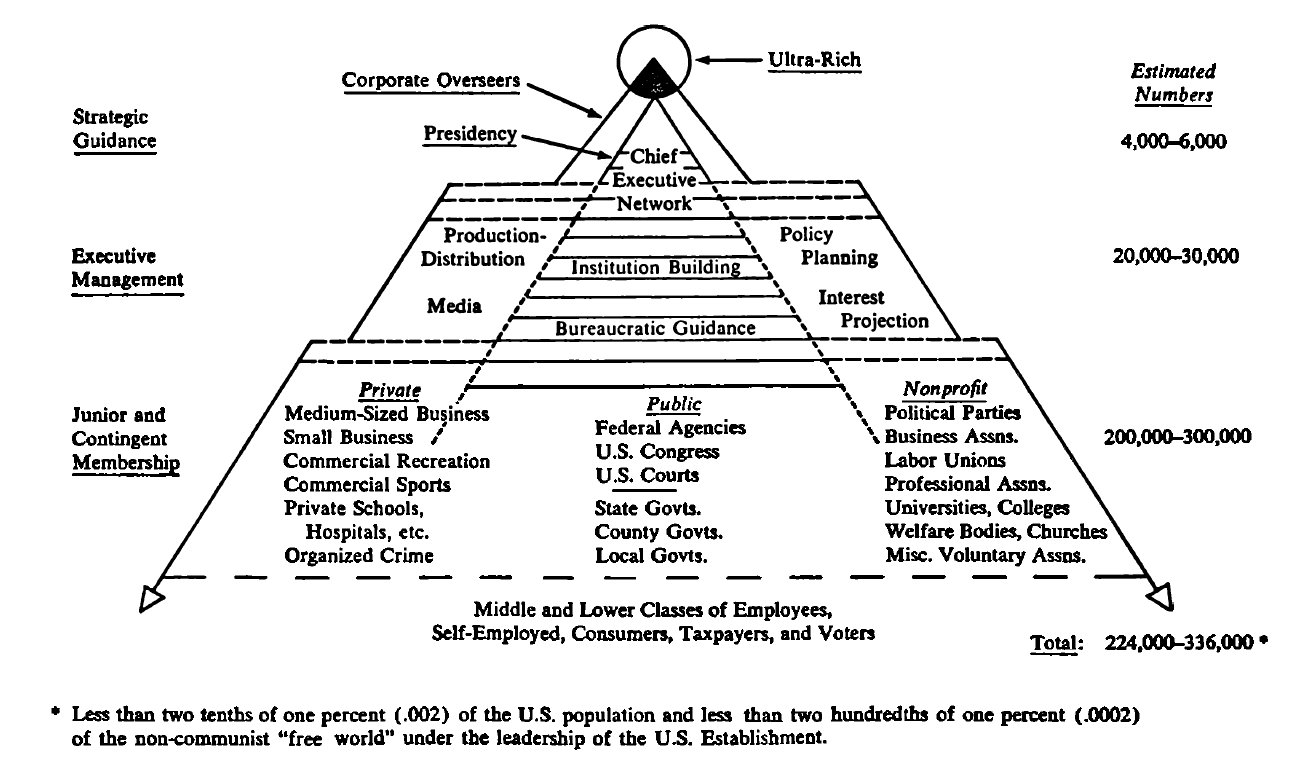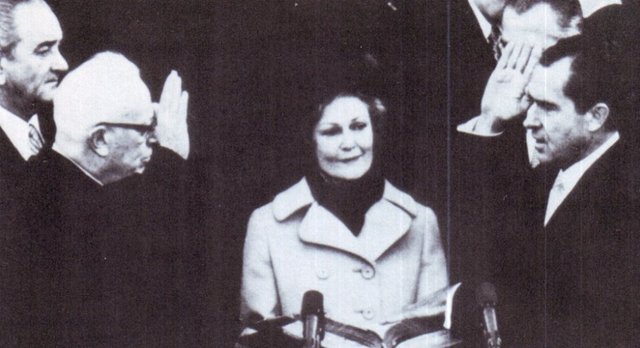ON POWER - BIG Government & BIG Business as US Policy
In a world of concentrated, impersonal power, the important levers and wires are usually pulled by invisible hands. To no one is it given to look on many of the faces behind the hands. But everybody knows that THEY include both Big Business and Big Government. In a society dominated by mass media, world-spanning corporations, armies and intelligence agencies, and mysterious bureaucracies, THEY are getting stronger. Meanwhile, the majority of people have little part in the decisions that affect their families, workplaces, schools, neighborhoods, towns, cities, country, and the world. This is why there is declining confidence in the artificial images and rhetorical sales talks of corporate and political leaders and the many institutions which support them.

“Wherever there is great property,” wrote Adam Smith two centuries ago, “there is great inequality. For one very rich man, there must be at least five hundred poor, and the affluence of the few supposes the indigence of the many.”
The greatest difference between the Ultra-Rich and the rest of us is that most of them are addicted to sensory gratification on a grand scale. This gratification takes the form of palatial estates, fabulously furnished town houses, private art collections, exclusive clubs, summer and winter resorts on many continents, membership in social registers, birth and burial under distinctive conditions, etc. If you ask how much a yacht costs, J. Pierpont Morgan once said, you’re not rich enough to afford one. To this old principle, another may now be added: If you really know how much money you have, then you’re not rich.

Let me tell you about the very rich. They are different from you and me. . . . Even when they enter into our world or sink below us, they still think that they are better than we are. They are different.
F. Scott Fitzgerald
Consider that most corporations are controlled by only a small minority of corporate stockholders. By usual Wall Street calculations, 5 percent stock ownership is enough to give total control; in a few cases, the figure may rise to 10 percent. The larger the number of stockholders, the smaller this percentage. This “internal pyramiding” is carried still further through chains of subsidiaries and holding companies. Thus, strategic control of a small block of holding company stock yields power over a vast network of accumulated power and capital. Many of these networks include both financial corporations and corporations in industry, utilities, communications, distribution, and transportation
No one can be truly powerful unless he has access to the command of major institutions, for it is over these institutional means of power that the truly powerful are, in the first instance, truly powerful . . .
C. Wright Mills

The major companies controlled by the corporate overseers are the largest concentration of capital in industrial capitalism’s two-hundred-year history. An important part of this picture is seen by looking at the 500 largest industrial corporations listed every year in Fortune magazine. In 1954, when Fortune started this listing, these 500 accounted for half the sales and two thirds of the profits of all industrial corporations. By the mid-1970s these figures rose, respectively, to two thirds of the sales and three quarters of the profits. They have been rising since.
One part of the mystery is the linkage between the presidency and the Ultra-Rich and the Corporate Overseers. Formally, certain links are provided by such groups as the “President’s Club” (executives who contributed $1,000 a year to Lyndon Johnson’s campaign chest) or the various business advisory committees that mobilized large sums for the reelection campaigns of Presidents Nixon, Ford, and Carter. Apart from party financing, there has been increasing interpenetration between the Chief Executive Network and the informal circles at the pinnacles of business wealth and power. For example, Under Presidents Nixon, Ford, and Carter, two mutually supporting trends developed: the multiplication of advice-or-action groups in such areas as the promotion of multinational corporations, foreign currency manipulations, the protection of U.S. foreign investments, and the imposition of wage controls or wage guidelines; and increasing interaction between the financial community and presidential staff. Together, these trends have led to more integration than ever before in American history between top business leaders and the prime movers in the federal government.
Our venerable institutions of government have outwardly remained the same, but they have grown more and more resistant to the popular will as they have become hardwired into a corporate and private influence network with almost unlimited cash to enforce its will.
The Deep State is the big story of our time. It is the red thread that runs through the war on terrorism and the militarization of foreign policy, the financialization and deindustrialization of the American economy, the rise of a plutocratic social structure that has given us the most unequal society in almost a century, and the political dysfunction that has paralyzed day-to-day governance.
Mike Lofgren

Those who take the most from the table Teach contentment
Those for whom the taxes are destined Demand sacrifice
Those who eat their fill speak to the hungry
Of wonderful times to come
Those who lead the country into the abyss
Call ruling difficult
For ordinary folk.
Bertolt Brecht
love your use of quotes. this piece needs more specific detail to mark it as relevant.
Nice post @fugetaboutit